



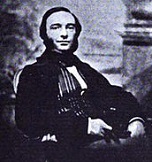









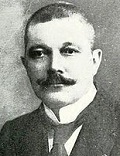



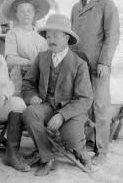



















TLW's Archeologistscope™ (Archeologist Historyscope) |
By T.L. Winslow (TLW), the Historyscoper™ |
© Copyright by T.L. Winslow. All Rights Reserved. |
Original Pub. Date: Oct. 10, 2015. Last Update: Jan. 6, 2025. |
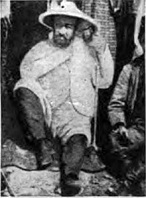
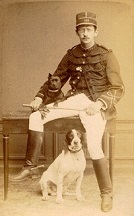
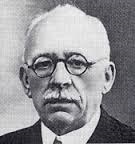
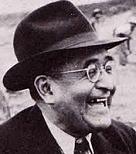
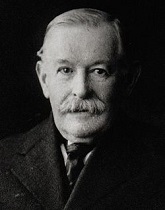

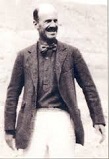
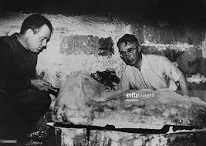
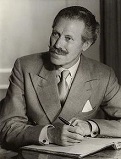
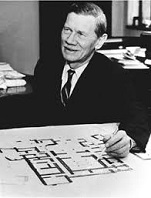
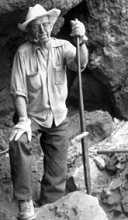
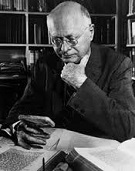
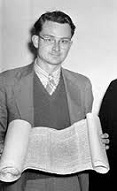
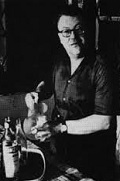




Westerners are not only known as history ignoramuses, but double dumbass history ignoramuses when it comes to archeology (archaeology) and archeologist (archaeologist) history. Since I'm the one-and-only Historyscoper (tm), let me quickly bring you up to speed before you dive into my Master Historyscope.
The History of Archeology begins with wealthy aristocratic British antiquarians with collections of curios who started hiring people to go and dig up new ones so they could be put in nat. museums to glorify the Empire on Which the Sun Never Sets.

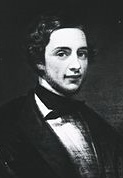
About 1,600 B.C.E. the oldest surgical treatise on trauma to survive to modern times, the Edwin Smith Papyrus is written during the Egyptian Second Intermediate Period (by first known physician Imhotep?), describing 48 cases of injuries, fractures, wounds, dislocations, and tumors, with treatment and prognosis, incl. closing wounds with sutures, using honey and moldy bread as antiseptics, stopping bleeding with raw meat, and immobilization for head and spinal cord injuries; magic is left as a last resort; it also contains detailed anatomical observations but shows no understanding of organ functions; the earliest known reference to cancers or ulcers of the breast; discovered in Luxor in 1862 C.E. by Am. antiquities dealer Edwin Smith (1822-1906).

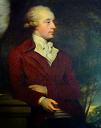
In 1798 Heytesbury, Wiltshire-born English antiquarian William Cunnington (1754-1810) begins pioneering the science of archeological excavation at Stonehenge, coining a number of terms to categorize and describe Neolthic and Bronze Age barrows; in 1808 he makes the first reference to a trowel in a letter to his antiquarian patron Sir Richard Colt Hoare, 2nd Baronet (1758-1838).

In 1802 German epigraphist Georg Friedrich Grotefend (1775-1853) first deciphers Babylonian cuneiform writing.

On Aug. 22, 1812 after learning Arabic and posing as a Muslim for safety, Swiss Orientalist and traveler Johann Ludwig (Jean Louis) Burckhardt (1784-1817) discovers the ancient Nabataean city of Petra in Jordan 50 mi. S of the Dead Sea, starting with Al-Khazneh (Arab. "The Treasury), going on to found Biblical Archeology.
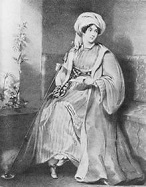
In 1815 English socialite adventurer-traveler ("Queen of the Desert") Lady Hester Lucy Stanhope (1776-1839) (niece of British PM William Pitt the Younger, who prefers to dress as a Turkish male sans veil) makes an archeological expedition to Ashkelon, becoming the first modern excavation in the Holy Land.

In 1817 Italian archeologist Giovanni Battista Belzoni (1778-1823), sent to Egypt in 1815 to construct a hydraulic engine for Mehmet Ali to raise the Nile clears away the sand from the entrance to Abu Simbel and discovers the tomb of Seti I, the finest royal tomb, causing it to become known as "Belzoni's Tomb". In 1818 Belzoni discovers the entrance to the Pyramid of Khafre.

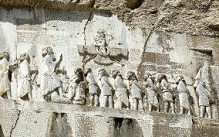
In Mar. 1834 British East India Co. archeologist Sir Henry Creswicke Rawlinson (1810-95) arrives at the Behistun Rock (the world's oldest roadside billboard?) in Bistoun 22 mi. E of Kermanshah, Iran in the Alvend foothills of the Zagros Mts. of W Iran, and begins copying the inscriptions (which are in Babylonian, Elamite, and some unknown script) for the next two years; in 1836 he becomes the first to decipher Old Persian cuneiform, becoming known as "the Father of Assyriology".
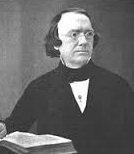
In 1841 after traveling to Palestine in 1838, Southington, Conn.-born Biblical archeologist ("Father of Biblical Geography/Archeology/Palestinology") Edward Robinson (1794-1863) pub. his magnum opus Biblical Researches in Palestine, Mount Sinai and Arabia Petraea (and the Adjacent Regions) (3 vols.), pioneering Biblical geography by identifying numerous Bible sites for the first time incl. Robinson's Arch in Jerusalem; he returns in 1852, pub. an enlarged ed. in 1856.

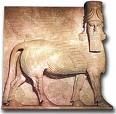
In 1842 after being appointed French consul in Mosul in 1841, Turin, Italy-born French archeologist Paul-Emile (Paul-Émile) (Paolo Emiliano) Botta (1802-70) discovers the ruins of the Assyrian capital of Dur-Sharrukin (modern-day Khorsabad) 9 mi. NE of Mosul, Iraq, built ca. 700 B.C.E., returning to France in 1845 with many artifacts from it, making him a star; in 1843 he excavates the entrance to Sargon II's palace throne room, discovering a pair of reliefs of a 16-ft.-high Winged Bull that combines features of a man (head), eagle (wings) and lion (tail); it ends up in the Oriental Inst. of the U. of Chicago.
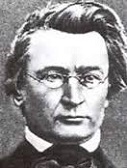
In 1842 at the recommendation of Alexander von Humboldt, German (Prussian) archeologist-Egyptologist Karl (Carl) Richard Lepsius (1810-84) is commissioned by Friedrich Wilhelm IV of Prussia to lead an expedition to Egypt and Sudan to take up where Champollion left off, reaching Giza in Nov. and discovering 67 pyramids and 130 noble tombs, visiting Naqa next year and reaching as far S as Khartoum before traveling up the Blue Nile to Sennar in Nubia, then reaching Thebes on Nov. 2, 1844, returning to Europe in 1846, after which Lepsius pub. his 12-vol. masterwork "Monuments from Egypt and Ethiopia" (1849), making him the father of modern Egyptology, coining the term "Book of the Dead" (Totenbuch). On Apr. 15, 1866 after returning to Egypt, he discovers the Table of Canopus (Canopus Stone) (Decree of Canopus), a record of a great assembly of priests in Canopus, Egypt in 238 B.C.E., which serves as a double-check on the trans. of the Rosetta Stone.

In 1844 after beginning a tour of India and Persia in 1841, visiting Bombay and Persepolis, Danish Orientalist Niels Ludvig Westergaard (1815-78) of Denmark begins deciphering ancient Elamite cuneiform using the 3-way parallel text of the 6th cent. B.C.E. Behistun Inscription, finding 96 syllabic signs, 16 ideograms, and 5 determinants.



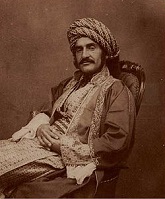
In 1845 in an effort to verify the stories in the Bible, British archeologist Sir Austen Henry Layard (1817-94) begins excavating the ruins of Nimrud (Calah) S of Mosul on the banks of the Tigris River in N Iraq, discovering the palace of Shalmaneser III (r. -859 to -824) along with the Nimrud Ivories, going on to reveal a non-Biblical civilization that existed long before the Bible was allegedly written, with the first known stories of a global flood complete with ark; in 1847 he discovers the lost ancient Assyrian capital of Nineveh N of Mosul, Iraq (destroyed in 612 B.C.E. by the Babylonians and Medes) on the Mound of Kuyunjik (ancient Mespila) (site of an Islamic shrine and cemetery), and in 1851 uncovers the lost royal Library of Assurbanipal (7th cent. B.C.E.), filled with thousands of clay tablets, incl. the Epic of Gilgamesh, sending 24K fragments to London, where they are displayed during the 1851 London Grand Exhibition and start an Assyrian fashion craze; too bad, he jumbles the tablets, making later reconstruction of their texts impossible; other discoveries made between 1842-54 by Layard and Sir Henry Creswicke Rawlinson (1810-95) of Britain, Mosul consul Paul-Emile (Paul-Émile) (Paolo Emiliano) Botta (1802-70) and Victor Place (1818-75) of France, and ethnic Assyrian Hormuzd Rassam (1826-1910) of Mosul in Nineveh, Sharrukin, and Calah slowly uncover the existence of the heretofore unknown ancient Sumerians, starting with Rawlinson independently deciphering the Behistun Stone last year; Irish clergyman Edward Hincks (1792-1866) determines that some of the Akkadian cuneiform inscriptions are in a non-Semitic language, which is later (1869) determined to be Sumerian; too bad, in 1855 Botta's successor Victor Place tries to send 235 cases of artifacts to Basra en route to Paris, but pirates ram the main barge and sink it, and only some rafts survive, the contents ending up in the Louvre and British Museum.

In 1849 British archeologist-geologist William Kennett Loftus (1820-58) discovers the ancient city of Uruk, along with the 21st cent. B.C.E. Ziggurat of Nana (Nanna) (Ur) near Nasiriya in modern-day Dhi Qar Province, Iraq, dedicated to the Sumerian Moon god Nana (Nanna) (Sin). In 1851 he excavates Susa for the British Museum, discovering the Persepolis Apdana. In Feb. 1855 he discovers the burnt 9th cent. B.C.E. Palace of Assurnasirpal II in Nimrud near modern-day Mosul, Iraq.
In 1851 Boulogne-sur-Mer-born French archeologist-Egyptologist Francois Auguste Ferdinand Mariette (1821-81) discovers the ruins of the Serapeum in Saqqara, Egypt, incl. the cool sarcophagi of the Apis bull, and breaks into the tomb on Nov. 12, finding lotsa loot; the French govt. later strikes a deal to share his finds 50-50 with the Egyptian govt., allowing him to found the Egyptian Dept. of Antiquities. In 1858 after the original museum (founded 1835 near the Ezbekeyah Garden) is moved to Cairo Citadel, and in 1855 gives all its artifacts to Archbuke Maximilian of Austria, the new Egyptian Museum (Museum of Egyptian Antiquities) is founded in Boulaq, Egypt on the Nile River by Mariette; in 1878 it is damaged in a flood, and in 1891 is moved to the Giza District of Cairo before moving in 1902 to Tahrir Square; next year Mariette founds the Supreme Council of Antiquities (SCA) in the Egyptian Ministry of Culture, which requires all foreign archeologists in Egypt to report their finds before pub. and oversees the recovery of stolen or illegally exported antiquities.

In 1851 British East India Co. Maj.-gen. ("the Father of Assyriology") Sir Henry Creswicke Rawlinson (1810-95) deciphers ancient Akkadian (Mesopotamiam) (Babylonian) inscriptions after realizing that each letter is a vowel-consonant combination.
In 1853 under the supervision of Sir Henry Creswicke Rawlinson, British East India Co. archeologist John George Taylor begins excavating Ur for the the British Museum, followed in 1855 by Eridu and Kuara, discovering the stela of Ashurnasirpal II in 1861 in Kurkh (near Diyarbekir), and the stela of Shalmaneser III in Kurkh in 1861.
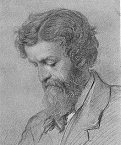
In 1857 British archeologist Sir Charles Thomas Newton (1816-94) discovers the remains of the Mausoleum of Halicarnassus (350 B.C.E.).


In 1860 after King Horemheb dies in 1,292 B.C.E. King Horemheb leaving no heir, and the aged high priest of Amon, Rameses (Ramses) (Ramesses) I (Menpehtyre) (-1280 to -1290), born a commoner from a military family (son of military cmdr. Seti) becomes king #1 of the Egyptian Nineteenth (19th) Dynasty (ends -1187), becoming the top Egyptian dynasty (it's all downhill after that), which is big on the god Seth (storm god, who guards Ra as he journeys across the sky, and killed and cut up his brother Osiris), then rules less than two years, waging war in Nubia, while beginning the pillared Hall of Karnak, Dr. James Douglas of Montreal, Canada, buys his mummy from tomb robber Mustafa Agha Ayat and takes it to the Niagara Falls Museum in Ont., Canada (founded 1827), where it is discovered in 1966 by German amateur Meinhard Hoffmann, who at first believes it is Nefertiti until it is discovered to be male; after purchase by Emory U., Egyptologist Zahi Hawass (1947-) certifies it in Apr. 2003, and it is put on display in the Cairo Museum. In 1996 the Valley of the Golden Mummies at Bahariya Oasis in the W desert of Egypt is discovered by Hawass, containing an estimated 10K mummies dating back to Grego-Roman Egypt.

In 1863 French archeologist Jules (Julius) Oppert (1825-1905) becomes the first to advance the theory that cuneiform signs were originally pictographs, which takes until 1913 to be accepted; in 1869 he coins the term "Sumerian" for non-Semitic cuneiform inscriptions found at Nineveh et al., from the royal title "King of Sumer and Akkad" appearing in several tablets.

In 1872 after deciphering the Assyrian Flood Tablet with what he believes is the story of Noah's Ark, and jumping up and rushing about the room in excitement and undressing himself, George Smith (1840-76) of the British Museum, pupil of Sir Henry Creswicke Rawlinson delivers a lecture on Dec. 3 to the Society of Biblical Archaeology on The Deluge Story in the Clay Tablets of Assurbanipal's Royal Library in Nineveh (burned down along with his palace), explaining his discovery of the Epic of Gilgamesh and claiming that there are missing tablets yet to be discovered, causing the London Daily Telegraph to offer 1K guineas to the Museum, and Smith to be sent to the Tell of Kuyunjik for 6 mo., and return with missing pieces about provisioning the Ark; he returns 1.5 years later, finds tablets pertaining to the Creation story, then makes a 3rd trip, dying in the summer of 1876 after contracting a virus from a canteen in the desert on the way to Aleppo.

On May 27, 1873 German ancient Greece freak archeologist Heinrich Schliemann (1822-90) claims to have dug up Priam's Treasure (Jewels of Helen), part of the remains of ancient Troy, which he had been excavating since 1870 in an effort to prove that it isn't a legend; too bad, after pub. the discovery in 1874, the Turkish govt. accuses him of smuggling, revoking his permission to dig until 1876, after which he returns in 1878-9, attempting to find the location of fabled Ithaca of Homer's "Odyssey", then returns to Troy in 1882-3 and 1888-90.


In 1877 French Louvre archeologist Gaston Charles Ernest Choquin de Sarzec (1832-1901) begins the excavation of ancient Lagash in Sumeria NW of the junction of the Tigris and Euphrates Rivers (until 1900), finding instead ancient Girsu (15 mi. NW of Lagash); he is followed by Marie Augustin Gaston Cros (1861-1915) (1903-09), Henri Pierre Louis du Verdier de Genouillac (1881-1940) (1929-31), and Andre Parrot (1901-80) (1931-3).


In 1880 French Egyptologist Gaston Camille Charles Maspero (1846-1916) is sent to Egypt as the head of the new Institut Francais d'Archeologie Orientale, and when Auguste Mariette (b. 1821) dies next Jan. 19 he also becomes dir. of the Egyptian Museum in Cairo, going on to work at Saqqara, arrest the tomb-robbing Abd al-Rassul brothers, who confess under torture to finding the royal mummies at Deir el-Bahri in July 1881, and supervise efforts to uncover the Sphinx in 1886; in 1881 he coins the term "Sea Peoples".

In 1885 Sir Ernest Alfred Thomas Wallis Budge (1857-1934) becomes asst. keeper of Egyptian and Assyrian antiquities at the British Museum, working his way up to keeper in 1894, and never budging (until 1924) - tired of paying too much for eyeglasses?

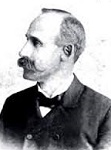

In 1888 excavations begin in ancient Nippur in Sumeria by U. of Penn. archeologists Rev. John Punnett Peters (1852-1921), John Henry Haynes (1849-1910) ("Father of Am. Archeological Photography"), and Hermann Volrath Hilprecht (1859-1924) (until 1900); in 1900 Haynes discovers the 2500 B.C.E. Temple Library of Nippur, containing 23K tablets, incl. the earliest known version of the Great Flood, but begins messing it up, causing Hilprecht (who left in 1889) to return to rescue it, becoming known as the hero of the Nippur dig.

In 1890 British archeologist James Theodore Bent (1852-97) explores Cilicia Trachea, followed next year by the ruins in Mashonaland in South Africa, followed by Great Zimbabwe, after which in 1893-4 he explores the remote Hadramut country, followed by S Arabia.

In 1890 Scottish U. of Aberdeen archeologist-scholar Sir William Mitchell Ramsay (1851-1939) pub. The Historical Geography of Asia Minor, based on his travels to Asia Minor, becoming the first to give a definite location to many of the cities mentioned in the Book of Acts, making him the #1 authority on New Testament geography. His wide travels in Asia Minor made him the recognized authority on all matters relating to the districts associated with St Paul's missionary journeys and on Christianity in the early Roman Empire. Greece and Turkey remained the focus of Ramsay's research for the remainder of his academic career. In 1883 Ramsay discovered the world's oldest complete piece of music, the Seikilos epitaph. In 1890 he discovered inscriptions in the unknown Anatolian language called Pisidian, a description of which he published in 1895. In the 1890s he he discovered two of the most important Phrygian monuments, the rock tombs "Aslantas" (Lion Stone) and "Yilantas" (Snake Stone), located close to the city center of Afyon. In 1915 he pub. The Bearing of Recent Discovery on the Trustworthiness of the New Testament (4th ed. 1920), containing the soundbytes: '"Further study... showed that the book (of Acts) could bear the most minute scrutiny as an authority for the facts of the Aegean world, and that it was written with such judgment, skill, art and perception of truth as to be a model of historical statement": "You may press the words of Luke in a degree beyond any other historian's". Starting out as a Tubingen School skeptic, he concluded that all thirteen New Testament letters ostensibly written by Paul were authentic.
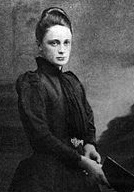
In 1895 English amateur Egyptologist Margaret Benson (1865-1916), daughter of Archbishop of Canterbury Edward White Benson becomes the woman granted a concession to sex, er, excavate in Egypt, incl. the Temple of Mut, Mut Complex, and Karnak; too bad, she has to quit in 1897 due to frail health, and later suffers a mental breakdown and croaks at age 50 after pub. The Temple of Mut in Asher: An account of the excavation of the temple and of the religious representations and objects found therein, as illustrating the history of Egypt and the main religious ideas of the Egyptians in 1899.


In 1896 Charlton, London-born English archeologist Sir William Matthew Flinders Petrie (1853-1942) (first to carefully dig archeological sites inch by inch rather than shovel them, and to date layers based on pottery findings) discovers the Merneptah Stele in Luxor, Egypt, which contains the earliest known mention of Israel. In 1930 he discovers a child's grave in Egypt dated to 3200 B.C. which contains objects used for a crude form of bowling.

In 1898 Dublin, Ireland-born Biblical archeologist Robert Alexander Stewart Macalister (1870-1950) begins excavations in Ottoman Palestine, moving to Gezer in 1902-9 and discovering the Gezer Calendar before switching to Celtic archeology in 1909-43, excavating the Irish royal site of Tara.

In 1900 after being discovered in 1878 by Minos Kalokairinos, English archeologist Sir Arthur John Evans (1851-1941) begins excavating the Palace of Knossos (Cnossus) on the Greek island of Crete, uncovering the Minoan civilization, which is distinct from the Mycenaean civilization.


In 1900 Hungarian-born British archeologist Sir Marc Aurel Stein (1862-1943) begins his first of four expeditions in C Asia (ends 1930); in 1907 he discovers the 16-ft.-long scroll Diamond Sutra, the world's first dated printed book, who purchases it from a monk guarding the caves; it was orginally pub. on May 11, 868 in Tang China by Wang Jie; opening: "Thus I have heard"; ending: "Thus shall you think of this fleeing world: A star at dawn, a bubble in a stream, a flash of lightning in a summer cloud, a flickering lamp, a phantom, a dream"; discovered in 1907 the Magao Caves of the Thousand Buddhas near Dunhuang in NW China by who purchases it from a monk guarding the caves - automatically makes the bestseller list?
In 1900 the Denver Museum of Natural History (later Denver Museum of Nature and Science) in Denver, Colo. is founded, later housing the Folsom Point, found in 1908 near Folsom, N.M. lodged between the ribs of a bison known to have been extinct for more than 10K years, proving the existence of humans in North Am. that far back - do I detect a little circular reasoning here?

In 1902 French archeologist Abbe Henri Edouard Prosper Breuil (1877-1961) visits the disputed Altamira Caves in NE Spain (discovered in 1879) and unearths animal bones with engravings identical to the ceiling paintings, c ausing the find to be declared authentic.
In 1902 after being first visited in 1849-50 by W.K. Loftus, Tell al-Warka in Iraq is excavated by Walter Andrae, followed in 1912-3 by German archeologist Julius Jordan, who discovers a temple of Ishtar dated to 3,000 B.C.E.; he returns in 1928, and is replaced in 1931-9 by Noldeke A. Ernst Heinrich and Heinrich J. Lenzen.

In 1903 after supervising the rebuilding of the Great Hypostyle Hall in Karnak (which lost 11 columns in 1899 in a chain reaction), and discovering the colossal pink granite statue of Second Intermediate Period Pharaoh Senusret IV Seneferibre in Karnak in 1801, French Egyptologist Georges Albert Legrain (1865-1917) discovers a treasure trove of 800 stone statues and 17K bronzes in the NW courtyard of the Temple of Amun in Karnak, becoming the biggest find (until ?); most end up in the Cairo Museum.

In 1904 after permission to excavate the Western cemetery in Giza was granted in 1902 by Gaston Maspero, dir. of the Egyptian Antiquities Service, receiving the southern section by lot, incl. the Valley of the Queens (Wadi al-Malekat) near Thebes, Biella-born Italian Egyptologist Ernesto Schiaparelli (1856-1928) finds the tomb of Queen Nefertari; in 1906 he finds the tomb of royal architect Kha and his wife Merit.

In 1905 Rockford, Ill.-born U. of Chicago. historian-archeologist (Egyptologist) James Henry Breasted (1865-1935) pub. his first book A History of Egypt from the Earliest Times to the Persian Conquest, getting him the first chair in Egyptology and Oriental History in the U.S. at the U. of Chicago. He follows with Ancient Records of Egypt: Historical Documents from the Earliest Times to the Persian Conquest, collected, edited, and translated, with Commentary (2 vols.) (1906-7), A History of the Ancient Egyptians (1908), Development of Religion and Thought in Ancient Egypt: Lectures Delivered on the Morse Foundation at Union Theological Seminary (1912), Ancient Times: A History of the Early World (1916) (2nd ed. 1935), and Survey of the Ancient World (1919). In 1919 he founds the Oriental Inst. at the U. of Chicago. He follows with Oriental Forerunners of Byzantine Painting: First-Century Wall Paintings from the Fortress of Dura on the Middle Euphrates (1924), The Conquest of Civilization (1926), and The Dawn of Conscience (1933), which makes a fan of Sigmund Freud, and starts with the soundbyte: "It has now become a sinister commonplace in the life of the post-war generation that man has never had any hesitation in applying his increasing mechanical power to the destruction of his own kind. The World War has now demonstrated the appalling possibilities of man's mechanical power of destruction. The only force that can successfully oppose it is the human conscience - something which the younger generation is accustomed to regard as a fixed group of outworn scruples. Everyone knows that man's amazing mechanical power is the product of a long evolution, but it is not commonly realized that this is also true of the social force which we call conscience - although with this important difference: as the oldest known implement-making creature man has been fashioning destructive weapons for possibly a million years, whereas conscience emerged as a social force less than five thousand years ago. One development has far outrun the other; because one is old, while the other has hardly begun and still has infinite possibilities before it. May we not consciously set our hands to the task of further developing this new-born conscience until it becomes a manifestation of good will, strong enough to throttle the surviving savage in us? That task should surely be far less difficult than the one our savage ancestors actually achieved: the creation of a conscience in a world where, in the beginning, none existed." In 1985 the Am. Historical Assoc. (AHA) establishes the James Henry Breasted Prize for the best book in English covering the period of history prior to 1000 C.E.


In 1905 Upper Clapton, London-born Sir Charles Leonard Woolley (1880-1960) becomes asst. at the Ashmolean Museum in Oxford, and is volunteered next year to assist English archeologist Francis John Haverfield (1860-1919) at a Roman excavation in Corbridge, and goes on, without training, to become one of the top archeologists, making big discoveries in Ur and other locales, getting knighted in 1935.


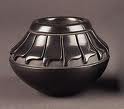
On June 8, 1906 Pres. Theodore Roosevelt signs the U.S. Antiquities Act, giving the U.S. pres. authority to issue executive orders to protect federal land with antiquities on it, albeit with token punishments; Roosevelt names Devils Tower Nat. Monument, rising 1267 ft. above the Belle Fourche River in NE Wyo. as the first U.S. nat. monument, along with a 1347-acre park; 783-acre Montezuma Castle Nat. Monument on Beaver Creek (Verde River) near Camp Verde, Yavapai County, Ariz. is also proclaimed, containing the well-preserved pre-Columbian 11th cent. 5-story 20-room Indian Montezuma Castle cliff dwelling 110 ft. up on a cliff face overlooking Beaver Creek in Camp Verde; Am. archeologist Edgar Lee Hewett (1865-1946) is instrumental in bringing the Antiquities Act about. In 1908 Hewett discovers black-on-black pottery near Santa Fe, N.M., causing him to recruit local potter Maria Montoya Martinez (1881-1980) to recreate the technique, causing Pueblo blackware pottery to make a comeback.
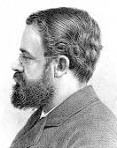
In 1906 Mexican archeologist Alfredo Chavero (1841-1906) dies after doing work on Aztec archeology incl. the pyramids of Cholula and pub. Historia Antigua de Mexico.

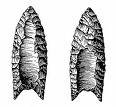
On Aug. 27, 1908 a severe rainstorm and flash flood on the Crowfoot Ranch in N.M. causes the Folsom Site in Folsom, N.M. to be discovered by African-Am. cowboy George McJunkin (1856-1922), who sends samples incl. the first known symmetrical leaf-shaped finely-fluted Folsom Point (dated 8K B.C.E. to 11.5K B.C.E.) to the Denver Museum of Natural History in 1918, which sends paleontologist Harold Cook in spring 1919, who excavates the site in 1926, finding 23 bison killed with Folsom points.


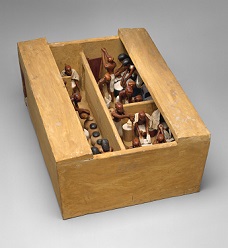
In 1909 after graduating from Harvard U., Washington, D.C.-born archeologist Herbert Eustis Winlock (1884-1950) becomes the youngest member of the New York Metropolitan Museum of Art's expedition to the royal necropolis in El-Lisht 25 mi. S of Cairo, moving to the Kharga Oasis 100 mi. W of Luxor to restore a temple of Amun; in 1911 he begins excavating the mortuary complex of Egyptian 11th Dynasty pharoah Mentuhotep II in Deir el-Bahri in the Valley of the Kings, discovering the bodies of 60 soldiers killed in battle and buried in linen shrouds; on Mar. 17, 1920 he discovers the tomb of his PM Meketre, which contains a model bakery-brewery.

On July 24, 1911 the Incan city of Machu Picchu is discovered by Honolulu, Hawaii-born Yale U. lecturer on South Am. history Hiram Bingham III (1875-1956) of Yale U.; too bad, he loots it of artifacts in 1912-15, causing a cent.-long dispute that is finally settled with their return in 2011.




In 1912 German archeologists led by Ludwig Borchardt (1863-1938) discover the Bust of Queen Nefertiti in the workshop of Thutmose in Tell el-Amarna, Egypt along with a Stela of Akhenaten and His Family; too bad, on Jan. 20, 2013 French Egyptologist Gustave Lefebvre (1879-1957) chooses the stela to go to the Egyptian govt., allowing the bust to go back to Germany, ending up in the Egyptian Museum in Berlin, after which the stela is suspected of being a fake.


In 1912 British archeologists Sir Charles Leonard Woolley (1880-1960) and David George Hogarth (1862-1927) (keeper of the Ashmolean Museum since 1909) begin excavating the ancient Hittite city of Carchemish (Karkemish) (until 1914); future WWI hero T.E. Lawrence works with them; when WWI starts, Hogarth gets Lawrence a job with British intelligence in Cairo, launching his career; in 1918 Woolley begins excavating ancient Babylon, going on to excavate the 21st cent. B.C.E. Ziggurat of Nana (Nanna) (Ur) near Nasiriyah in modern-day Dhi Qar Province in Iraq.

In 1921-4 French Egyptologist Jean Pierre Marie Montet (1885-1966) excavates in Byblos (modern-day Jbail) in Lebanon; in 1929 he begins excavating at Tanis in Lower Egypt Egypt, hitting it big in the 1939-40 season, discovering the intact tombs of Pharaoh Psusennes I, Pharaoh Amenemope, and Pharaoh Shoshenq II, along with the partially-plundered tomb of Takelot I, and the fully-plundered tomb of Osorkon II; on May 20, 1939 removes Shoshenq II's coffin lid in the presence of King Farouk of Egypt, and discovers a hawk-headed silver coffin, gold funerary mask, and a treasure trove of jewel-encrusted bracelets and pectorals.



On Nov. 4, 1922 Kensington, London-born English Egyptologist Howard Carter (1874-1939) announces his discovery, along with financial backer George Edward Stanhope Molyneux Herbert, 5th Earl Carnarvon (1866-1923) of KV62, the Valley of the Kings tomb of 18-y.-o. king Tut (Tutankhamun) (d. -1323) underneath workmen's huts from the Ramesside Period, becoming the first Egyptian tomb discovered unopened in modern times, containing more than 5K objects, incl. his lifelike Gold Death Mask of King Tutankhamun on his mummy, found inside nine outer cases and a 300-lb. gold inner case; on Nov. 26 Carter makes a "tiny breach in the top left hand corner", allowing them to peer by candlelight at the "wonderful things" of glimmering gold and ebony. On Feb. 16, 1923 the sealed burial chamber of the Tomb of King Tutankhamen (King Tut), unearthed last Nov. 4 by Howard Carter and Lord Carnarvon in the Valley of the Kings in Egypt is unsealed, bringing King Tut's Curse on all 20 involved, starting on Apr. 5 with Lord Carnarvon, along with his personal secy. Capt. Richard Bethell (Nov. 15, 1929) and his father Lord Westbury (Feb. 20, 1930), Carnarvon's half-brother Aubrey Herbert (Sept. 23, 1923), and Carnarvon's friend Sir Ernest Wallis Budge (Nov. 23, 1934), but not Carter himself, who lives for 17 years and dies at the age of 65; "Everywhere the glint of gold"; six mysterious London deaths attributed to the curse were really ritual revenge murderers by "wickedest man in the world" English Satanist Aleister Crowley (1875-1947)?


In 1925 Upper Clapton, London-born English archeologist Charles Leonard Woolley (1880-1960) and his apprentice Max Mallowan (1904-78) begin excavating Ur, ancient capital of Mesopotamian civilization (until 1931); in 1930 Mallowan meets crime novelist Agatha Christie, and later marries her.

On Oct. 25, 1927 Peruvian archeologist ("Father of Peruvian Archeology") Julio Cesar (César) Tello (1880-1947) uncovers the first of 429 mummy bundles containing the elongated Paracas Skulls in a tomb in the Paracas Peninsula in S Peru, dating back 3K years, the world's longest elongated skulls, mainly with red hair.

In 1927 Am. naturalist Roy Chapman Andrews (1884-1960) of the Am. Museum of Nat. History in New York City begins an expedition to the Gobi Desert (ends 1930), discovering the oldest known mammals, incl. the baffling hornless rhino-like Baluchitherium (Indricotherium), largest land mammal known to date; his expedition opens the Gobi Desert to commercial motor traffic.

In 1928 after excavating Giza in 1912-14 and 1926-8, German Egyptologist (former Roman Catholic priest) Hermann Junker (1877-1962) began excavating the West Delta of the Nile River, discovering the Merimde-Benisalam site, one of the earliest discovered of the Predynastic Period.
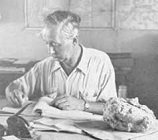
In 1929 clay tablets with the 32 cuneiform letters of the Ugaritic alphabet are found at Ugarit (Ras Shamra) in N Syria near Latakia by a French excavation headed by archeologist Claude Frederic-Armand Schaeffer (1898-1982), and are later dated to around 1450 B.C.E. and shown to be a consonantal alphabet, then are used to decipher mythological texts throwing light on the religious life of ancient Syria and the Canaanites (ancestors of the Phoenicians), which are tempting to apply to the Bible.

In 1932 Minneapolis, Minn.-born Am. archeologist Carl William Blegen (1887-1971) of the U. of Cincinnati begins excavating in Troy, following in 1939 at the site of the Palace of Nestor in Pylos, Greece (destroyed by fire ca. 1200 B.C.E.), discovering the archive room filled with Linear B script, revealing the best-preserved Bronze Age (Age of Homer) palace on the Greek mainland; further digs reveal an intertwining of Greek Mycenean and Minoan culture.

In 1934 Glasgow, Scotland-born archeologist Sir Robert Eric Mortimer Wheeler (1890-1976) establishes the Inst. of Archaeology at the Univ. of London, going on to oversee excavations of Roman period sites in Britain while advancing methdology and encouraging public interest in the discipline with his BBC-TV series "Animal, Vegetable, Mineral?" (1952-9), becoming "the most famous British archaeologist of the twentieth century" (Gabriel Moshenka and Tim Schadla-Hall); too bad, he has a problem with groping young women and cheating on his three wives, incl. archeologist Tessa Verney Wheeler (1893-1936), and tending to act as a "benevolent dictator", and later his interpretations of archeological sites are discredited.

In the 1930s Am. archeologist Luther Sheeleigh Cressman (1897-1994) discovers Paleo-Indian sites at Fort Rock Cav, Ore. and Paisley Caves, Ore., incl. a pair of sagebrush bark sandals dated at -8.5K to -7.3K in 1938, the oldest footwear discovered.
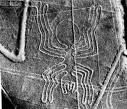
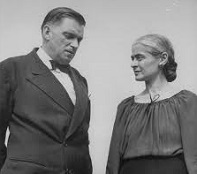
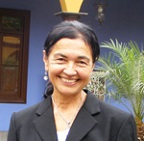
In 1940 Long Island City, N.Y.-born historian Paul August Kosok (1891-1959) begins field studies in Peru (until 1941, then 1948-9), discovering the Nazca Lines (built in -500 to +500) in 1941 and discovering their bird and other patterns from the air, along with their astronomical orientation; German mathematician Maria Reiche (1903-98) assists him, staying on after for life after he leaves, becoming known as "the Lady of the Lines". In 1948 Kosok discovers the ancient city of Caral in the modern-day Lima desert region of Peru is founded, becoming the oldest known urban center in the Americas, containing a temple complex, amphitheatre, and houses; in 2001 Peruvian archeologist Ruth Martha Shady Solis (1946-) pub. radiocarbon dates of 2627 B.C.E. to 1977 B.C.E.


In early 1947 11 Dead Sea Scrolls are discovered by 15-y.-o. Bedouin shepherd Muhammad adh-Dhib (Arab. "the wolf") (George Herbert's Muad-dib?) in a cave above Qumran 1 mi. from the NW shore of the Dead Sea in caves 1Q and 3Q on the Qumran Waddy near ancient Khirbet, Palestine, built ca. 100 B.C.E. and destroyed by the Romans ca. 68 C.E.; the Syrian Orthodox Monastery of St. Mark in Jerusalem buys five of them in 1948, and the Hebrew U. of Jerusalem buys the other six; 972 texts are discovered by 1956; in spring 1948 Am. archeologist John C. Trever (1916-2006) of the Am. School of Oriental Research in Jerusalem examines fragments, and discovers the oldest known copy of the Book of Isaiah (100 B.C.E.) among them, 1.4K years older than the next oldest in existence (1300 C.E.), proving that the text of the Old Testament has survived virtually intact after all these cents.; Am. archeologist William Foxwell Albright (1891-1971) of Johns Hopkins U. calls it "the greatest manuscript discovery of modern times"; the Israeli govt. later launches Operation Scroll to survey all the caves in the area, discovering hundreds of parchment and papyrus scrolls and scraps, discovering a 12th cave in 2016.
In 1947 British archeologist Francis R. Steele reconstructs the 18th cent. B.C.E. Code of Hammurabi from the Nippur excavations of 1888-1900.

In 1949 after switching from Nazi propaganda to archeology and changing his name, German journalist-writer C.W. Ceram (Kurt Wilhelm Market) (1915-72) pub. the bestseller (5M copies) Gods, Graves and Scholars: The Study of Archaeology (Götter, Gräber und Gelehrte), which is pub. in 28 languages and becomes an internat. hit, causing the Ceram Prize to be founded in his honor in 1974 by the Rheinisches Landesmuseum in Bonn.
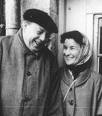
In 1951 British archeologist Jacquetta Hawkes (nee Jessie Jacquetta Hopkins) (1910-96), daughter of Sir Frederick Gowland Hopkins (1861-1947), and wife (1933-) of Christopher Hawkes (1905-22) and (1953-) J.B. Priestley (1894-1984), who was the first woman student of archeology and archeology at Newnham College, Oxford U. pub. A Land, a bestseller proposing a synthetic cosmogony of consciousness, culture, and geology, reducing Earth's history to the "purpose" of demonstrating that we are all "creatures of the land"; "I have used the findings of the two sciences of geology and archaeology for purposes altogether unscientific"; "The image I have sought to evoke is of an entity, the land of Britain, in which past and present, nature, man and art appear all in one piece."

In 1961 British archeologist James Mellaart (1925-2012) begins excavating the Neolithic town of Catal Huyuk (Çatal Hüyük) (Çatalhöyük) (Turkish "fork mound") SE of Konya in S Anatolia (until 1965), revealing it as the first known city.
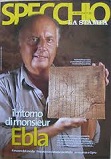
In 1963 Italian archeologist Paolo Mathiae (1940-) of the U. of Rome begins surveying the plains of NW Syria, beginning excavations next year at Tell Mardikh (modern-day Ebla, Syria) (35 mi. SW of Aleppo), and in 1974-5 discovering the 1.8K clay cuneiform Ebla Tablets, dated to -2500 to -2250, becoming the most important archeological find of the 20th cent., confirming the site as ancient Ebla ("white rock") (c. -3500), proving the Eblaite Kingdom was the first recorded world power, equal to Egypt and Mesopotamia; the tablets refer to the town of Ha-lam, identified with Aleppo (Halab) (modern-day pop. 1.8M), known for it white marble.

In 1968 English archeologist John Desmond Clark (1916-2002) proposes that stone tool industries be grouped into five "modes" that are descriptive rather than based on specific sites: Mode I (simple flakes and cores), Mode II (flakes produced by direct percussion), Mode III (wide use of prepared cores), Mode IV (where blades and burins are dominant), and Mode V (microliths).
In 1970 the charred 1st cent. Ein Gedi Scrolls are discovered by archeologist Yosef Porath in an burned-down Essene synagogue near the Dead Sea; in 2015 the Israel Antiquities Authority's Dead Sea Scrolls Preservation Lab in Jerusalem uses 3-D X-ray computer tomography to reconstruct the text, finding it to be identical to the Book of Leviticus in use today.


In 1974-5 Italian archeologist Paolo Matthiae (1940-). discovers the library of 1.8K+ clay cuneiform Ebla Tablets, created ca. 2500 B.C.E. by the Ebla ("white rock") civilization (built over limestone bedrock to take advantage of natural springs) in N Syria, with a pop. of 200K, incl. 20K in the town of Ebla.
In 1975 the bi-monthly mag. Biblical Archaeology Review begins pub. for gen. public by the Biblical Archaeology Society (until ?); in 1991 the society pub. a facsimile ed. of the Dead Sea Scrolls, pissing-off the small clique of specialists who thought they owned them.


In 1978 the 1st cent. C.E. Bactrian Gold is discovered in a burial ground in the Karakum Desert in 1978 by Soviet archeologist Viktor Ivanovich Sarianidi (1929-).


On June 12, 1981 Steven Spielberg's Raiders of the Lost Ark (Paramount Pictures) debuts, becoming a quantum leap in action movies, making Harrison Ford (1942-), who plays ophidiophobic (snake-loathing) Indiana Jones (after Tom Selleck turns it down) a household name as he and his colleague Marcus Brody (Denholm Elliott) and Egyptian sidekick Sallah (John Rhys-Davies) (after Danny DeVito turn it down) and feisty jilted girlfriend Marian Ravenwood (Karen Allen) battle rival French archeologist Rene Belloq (Paul Freeman) and a nasty bunch of Nazis incl. Wolf Kahler as sadistic Col. Dietrich, and Ronald Lacy as Maj. Arnold Toht in the 1930s to gain control of the fabled Jewish Ark of the Covenant; Alfred Molina plays Satipo; the first 3 min. has more action than most other movies, and it ramps up from there, exhausting every plot trick and never suffering from a boring moment where people just stand around or walk or talk; George Harris plays Katanga; Terry Richards plays the swordsman whom Indy shoots; shot in 73 days for $18M; #1 film of the year, grossing $242M in the U.S. and $389.9M worldwide on an $18M budget.


In 1987 British archeologist Andrew Colin Renfrew (1937-) proposes the Renfrew (Anatolian) Hypothesis, that Indo-European-speaking tribes orginated in Anatolia (Asia Minor) about 7000 B.C.E. and diffused around the Mediterranean; meanwhile in the 1960s Lithuanian-Am. archeologist Marija Gimbutas (1921-94) proposes the Kurgan Hypothesis, that they originated in the Pontic-Caspian steppe about 4000 B.C.E.; Renfrew later moves the homeland of Proto-Indo-Europeans to the Balkans in 5000 B.C.E. In 2007 Am. archeologist David W. Anthony pub. The Horse, the Wheel, and Language: How Bronze-Age Riders from the Eurasian Steppes Shaped the Modern World, proposing the Revised Steppe Theory of the Kurgan Hypothesis, attributing the spread of Indo-European languages about 4K B.C.E. to the domestication of the horse and invention of the wheel in the Eurasian Grass-Steppe.

In 2000 the sunken ancient Egyptian port city of Thonis-Herakleion is discovered 7 km off the Egyptian shore in Aboukir Bay by an internat. mission led by Moroccan-born French archeologist Franck Goddio (1947-).

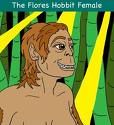


In 2003 height-challenged hobbit-sized (30-45 in. tall) human relative Homo floresiensis (Flores Man) (AKA Homo hobbittus), with large eye sockets, small front teeth, and a brain one-third the size of modern Homo sapiens is discovered by Kiwi archeologist Michael John "Mike" Morwood (1950-2013) of the U. of New England near the Liang Bua Cave on Flores Island in E Indonesia near New Guinea and Java, with a stone tool technology that allowed them to survive from -58K until -10K; does island living favor shrinking sizes, incl. brain size?; in 2006 critics led by Robert D. Martin of the Field Museum in Chicago argue that the find is really a modern Homo sapiens with microcephaly, and on Aug. 21, 2006 an article by Robert B. Eckhardt of Penn State U. supports it; in 2007 Morwood shoots back with the book A New Human; in 2014 a team led by Robert B. Ekhardt of Penn State U. pub. an article claiming that they are really Homo sapiens with Down syndrome; the consensus later emerges that they are a distinct species.
In 2005 KV 63, the 63rd tomb found in the Valley of the Kings near Luxor, Egypt is discovered by U.S. archeologists, becoming the first new tomb uncovered since King Tut's in 1922; in June 2006 the tomb is opened, revealing embalming materials and woven flowers from the period of -1500 to -1000.
In 2005 the Badlands Guardian (Indian Head) near Medicine Hat, Albert, Canada is discovered, becoming a mystery of history (until ?).
On Jan. 18, 2022 NASA begins the first archeological experiment in space in the ISS, creating a test pit with adhesive tape and photographing the way the space is used by the astronauts.